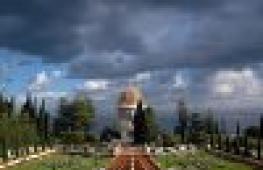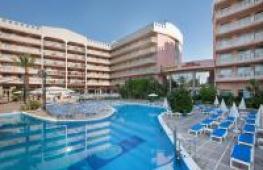Colored desert arizona map. Petrified Forest (Petrified Forest) - how we went to Petrified Forest National Park
I dropped the story of my winter trip to Arizona without finishing it because of a new trip. But about him later.
It was only the last day with only one planned location - the Petrified Forest National Park. This park lies away from the concentration of attractions, although a large highway number 40 passes right through it, and next to it the famous Route 66. You cannot get to the park directly from any of these roads. There are only two official entrances.
The park undoubtedly deserves a one-time visit, being very interesting geologically and paleologically and quite photogenic. For example, I had to split pictures into three posts.
Unfortunately, it is designed in such a way that almost everything that you can see is right next to the only asphalt road that pierces the park from north to south. Walking routes in the Petrified Forest there are very few, they are short (there are inaccessible exceptions!), very well equipped and quite crowded.
While exploring the park from home, we chose several one-mile walks: Painted Desert Rim Trail - the colored desert in the north of the park, Blue Mesa Trail - striped mauve hills in the center, and either Long Logs or Giant Logs - petrified trees in the south. It is not clear how I missed the Jasper Forest Trail, confining myself to the observation deck of the same name. It seems that this is where the most spectacular photographs found on the net were taken.
We spent the night in the town of Holbrook near the northern entrance to the national park. The budget hotel Lexington Inn pleased with two things - four types of fresh berries for breakfast and Indian Kachina dolls in the lobby. Kachins are not children's toys, but images of natural spirits and ancestral spirits - the traditional religion of the Hopi Indians. The Kachin figures are carved from the roots of the Friemont Cottonwood poplar, colored and endowed with a variety of attributes in accordance with their roles. The famous flutist Kokopelli is also a Kachina. Here, on the site kachina.us, you can read in more detail, naturally, in English.
We tried to leave the hotel early in order to catch a good light on the hills of the colored desert. We could not get into the park at dawn, because it is closed at night, and they start to start up only at 8 in the morning. So the first rays of the sun were shot on dolls and on a car that had chilled out overnight.
 |  |
And so we left the car at the first observation deck Tawa Point and walk along the path at the edge of the plateau. The colored desert lies beneath us. At the very bottom, very small chocolate cones on purple placers are visible. There are few of them.

The main colors are ocher of different saturation, pinkish ash, camouflage wormwood greens.

And dry herbs repeat the colors of the earth in reverse order.
 |  |

At the "far" end of the trail, it is called Kachina Point, is the historic Painted Desert Inn. The first hotel called Stone Tree House was opened here in the 20s of the last century, the building was built from petrified logs. In 1937-40, architect Lyle Bennett designed and built a new adobe building. And in 1947 Mary Jane Coltier (the one who built the watchtower in the Grand Canyon and La Posada in Winslow) renovated and expanded this hotel for railroad Fred Harvey. She also invited Hopi artist Fred Caboti to paint the walls of the hotel. We, unfortunately, did not see the frescoes due to too early a time.
The hotel operated until 1963 and closed with the demise of the railway. It was nearly demolished in the seventies. In 1987, the building was declared national historical monument, and by 2006 it was restored and opened to the public as a museum and a book and gift shop.


Somewhere shortly before the intersection with Route-66, the park road leaves the colored desert.
Around the middle of the park along the road are the striking striped hills of The Tepees, named for their shape.

It is not allowed to come close to them, not to mention to climb - they are very shabby and loose, but you can admire from a distance.
First, however, you can admire the Newspaper Rock - a rock covered with petroglyphs. And you have to look at him from afar. Stationary telescopes installed on the observation deck, or a longer lens, help.

And now - wigwams! On this side, however, they do not correspond to the name.

Correct angle.

And bigger.

But only in parts it turns out.

On the nearest of them, blue-purple stripes are clearly visible at the bottom. A very unusual color for stones. And not far from The Tepees, away from the main road, is the Blue Mesa, all made up of these ancient rocks. But about her separately.
general information
Rocks and soils of the Colored Desert are composed of various minerals, remains of fossil plants and animals, which explains the variety of colors. It is dominated by red rocks of the most varied shapes. At sunrise and sunset, the scarlet rocks look especially impressive, they suddenly turn purple, blue and dark orange.
Geologically reminiscent of many of the Colorado Plateau parks, this park was once a flood plain crossed by streams that nourished majestic conifers. Due to volcanic eruptions and volcanic ash, trees began to receive less oxygen and eventually died out. Gradually, silicon-bearing waters began to seep through their trunks, gradually transforming the original organic tissues into silicon deposits. Then the silicon crystallized, turning into quartz, and the ancient trees were forever enclosed in a stone shell. The largest example of this phenomenon in the world can be seen in the Petrified Forest National Park ("Petrified Forest").
One of the favorite sites for tourists is Newspaper Rock ("Newspaper Rock"), a huge piece of sandstone covered with petroglyphs. From here you can walk to the Long Logs Trail, which runs partly along the Rainbow Forest (Rainbow Forest). The petrified trees are colored differently due to the presence of iron, coal, manganese and other minerals.
The Colored Desert, in northern Arizona, in the United States, is one of the most amazing places on our planet. This is most of the North American Colorado Plateau. The most beautiful colored hills stretch along the Little Colorado River and form an absolutely incredible scenic landscape. This desert is part of the famous Grand Canyon and is part of the Petrified Trees National Park.
The name of the desert was first used in 1858 by Lieutenant Joseph Ives to describe the colored stripes of red, yellow, white, blue, and lilac. The hot desert air sometimes turns into pink haze or purple haze as colored dust is lifted into the air. Together, all the colors form an amazing rainbow, stretched across the entire desert, like colored waves shimmer over the hills.
It took nature millions of years to create this amazing canvas. Crustal faults, ocean waters, volcanic eruptions, earthquakes, erosion and sunburst are just a few of the factors behind this stunning painting and creating one of the planet's most unique landscapes.
Sonoran Desert
Sonora is one of the most extensive and driest deserts North America... They cover the territory of the state of Arizona, California and northwestern Mexico, which in total is more than 320,000 kilometers. On its territory there is National Park Saguaro, including the deserts of Colorado, Yuma and Lechugilla.
Despite the arid climate, Sonora is not completely covered with sand. More than sixty species of animals and more than one hundred species of birds live here. Only in this region of North America there are Jaguars and huge Saguaro cacti, more characteristic of Mexico. 17 Indian tribes live in the desert on reservations, preserving their ancient customs and traditions.
The largest city is Phoenix, with a population of about 4 million people. The Coachella Valley is home to around 365,000 people and is home to several major southern resorts... Among them are Palm Springs and Palm Desert, known for their mild climates, when the temperature does not drop below 21 and does not rise above 32 degrees. Mango, citrus and fig trees are grown here in orchards.
The Colored Desert is part of the famous Grand Canyon and is part of the Petrified Trees National Park. A huge number of colored hills stretches over an area of almost 20,000 square kilometers. These places are located at an altitude of 1370 to 1980 meters above sea level.
Most of it is on the Navajo Reservation, who have lived in the area for centuries. The main distinguishing feature of the Colored Desert is the multi-colored stripes stretching for tens of kilometers. Their color ranges from red, yellow and white to blue and lilac. Well, when hot winds raise colored dust, a carnival of colors and a riot of colors begins. Thousands of tourists and amateurs gather to see these wonders. unusual places our planet. The colored desert is barren, it is always very dry here, and once there was a lush coniferous forest, the fossil remains of which are found by archaeologists. The cause of his death was a volcanic eruption. Taken together, all the colors form an amazing rainbow spread throughout the desert and its hills. Allegedly colored waves shimmer over the hills and elevations of these places. It took nature millions of years to create this amazing canvas. Fissures in the earth's crust, ocean waters, volcanic eruptions, earthquakes, erosion and sun rays are just a few of the messengers of nature who worked with this stunning painting and created one of the unique landscapes of the planet. It is also worth noting that each of the colors was formed in a certain era, the layers were superimposed on each other like a cake, and this process is still ongoing. One can only guess how the Colored Desert will surprise our future descendants.







The Colored Desert is part of the famous Grand Canyon and is part of the Petrified Trees National Park. A huge number of colored hills stretches over an area of almost 20,000 square kilometers. These places are located at an altitude of 1370 to 1980 meters above sea level
We have already written about the Grand Canyon in a separate article, so let's go directly to the story about this amazing wilderness... Most of it is located on the territory of the Navajo Indian Reservation, who have lived in this area for many centuries. 
The main distinguishing feature of the Colored Desert is the multi-colored stripes stretching for tens of kilometers. Their color ranges from red, yellow and white to blue and lilac. Well, when hot winds raise colored dust, the most natural carnival of colors and a riot of colors begins. Thousands of tourists and lovers of unusual places of our planet gather to see these wonders.
The Colored Desert is barren, it is always very dry, and once there was a lush coniferous forest, the fossil remains of which are found by archaeologists. The cause of his death was a volcanic eruption 
Taken together, all the colors form an amazing rainbow spread across the desert and its hills. As if colored waves shimmer over the hills and hills of these places 

It took nature millions of years to create this amazing canvas. Crustal faults, ocean waters, volcanic eruptions, earthquakes, erosion and sun rays are just a few of the messengers of nature who worked with this stunning painting and created one of the most unique landscapes on the planet. 

It is also worth noting that each of the colors was formed in a certain era, the layers were superimposed on each other like a cake, and this process is still ongoing. One can only guess how the Colored Desert will surprise our future descendants 




